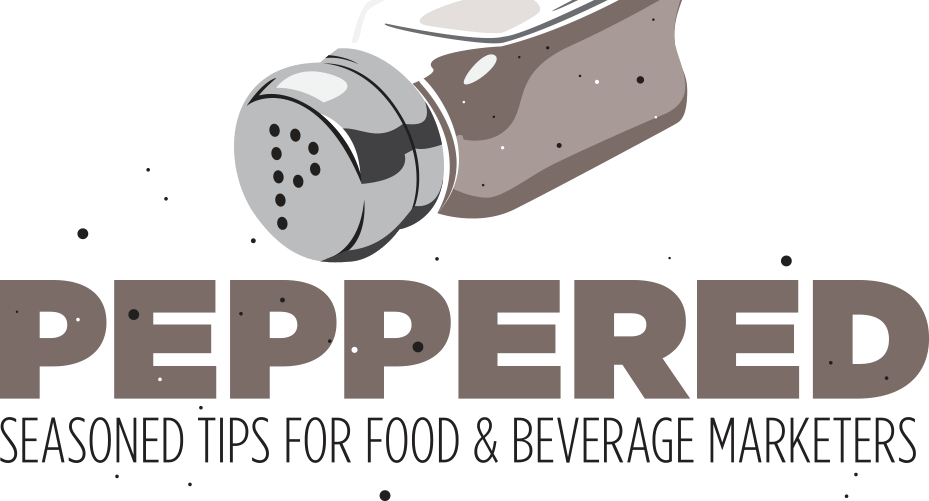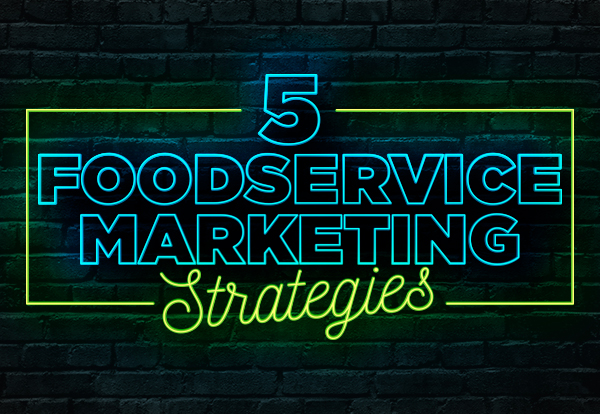Foodservice products represent a uniquely complex challenge for food and beverage marketers. Far more complicated than CPG food marketing, and far too many companies leaving the fate of their foodservice success solely in the hands of their sales team.
While sales teams and distributors play a crucial role in the success of any brand, those efforts must work in tandem with a solid marketing and brand program.
The path to identifying and reaching your ideal foodservice customers is seldom a straight line, and even the most established brands could use a hand navigating this corner of the market.
Here are five things to consider in your foodservice marketing program:
Know Your Buyer. Start by knowing which segment you’re targeting; commercial or noncommercial. Is your audience primarily chefs, owner-operators, or buyers? From there, you can dig even deeper, identifying specific niches within the foodservice world. You can filter by types of restaurants or chains, retail foodservice, education, healthcare, B&I — the list goes on and on. Each of these audiences has a different motivation for the products they purchase, and will have a different set of priorities: premium quality, portion control, efficiency and prep, hold time, health benefits, food safety, etc.
If you want to increase the effectiveness of your marketing and advertising program, you first need to understand who your customers are and tailor your messaging accordingly.
You need to craft a specific line of buyer messaging for each segment you want to target. This messaging should speak directly to the wants, needs, and pain points of that specific segment. Show your customers that you truly understand what they’re looking for in a food brand.
Understand Your Pathway to Purchase. As foodservice marketers, we know this is where it gets complicated. An effective marketing program targets both distributors and operators. In retail, you would call this a push-pull strategy. The size of your company and marketing budget can determine how integrated you can make your program.
Many companies focus their efforts primarily on selling to distributors. This can be effective when done correctly. The issue is that most of those companies end up inadvertently allowing their distributors to have a disproportionate impact on the success (or failure) of their brand. The heart of the matter is this: marketers must take ownership of this process. You and your sales team know more about your product and are more passionate about the success of your brand. No one can market or sell it like your own team. No matter how motivated outside broker teams or distributors are, they will never represent your brand with the same level of passion and priority as your internal team.
This means that every company needs to have two clearly defined pathways to purchase: Distributor and Direct to Operator focuses.
Harness Technology to Reach Customers. Modern technology has opened up a whole new world of marketing tactics for foodservice. You can now reach distributors, buyers, chefs, or any defined audience through digital means.
Your foodservice marketing program should be active in tactics such as:
Mobile Optimization. 75% of consumers are accessing mobile first. This includes foodservice customers and buyers. If you want to effectively reach your target audience, especially busy, on-the-go chefs and buyers, you need to be targeting them on their mobile devices.
Hyper Targeted Digital. Utilize targeted outbound ads—both video and static—to target your audience. You can target via location, job title, industry, interest, and host of other criteria to get your ads in front of your buyer. Developing an effective foodservice plan requires the right mix of social, programmatic, and remarketing strategies. This is highly technical and requires experienced professionals.
Email. With email, it all comes down to the list and the message. If you don’t have a proprietary list of buyers, you should start building one today. You can tie this effort directly to your outbound digital campaign, utilizing a promotion to begin gathering emails. Once you’ve got a solid pool of contacts, segmenting that list correctly is crucial.
Website. You need a dedicated foodservice website. One that speaks directly to your buyers. Content and aesthetics—appetite appeal, video, copy, relevant solutions, etc.—all need to work in tandem for an effective foodservice website.
Verified Audiences. Utilize trade publications and associations to maximize your reach to foodservice customers by targeting verified audiences and industry segments, engaging them through tailored digital and email strategies.
You should be using technology in addition to the traditional, tried-and-true methods of foodservice marketing, like trade publications. These are great tools for driving brand awareness.
Be Distinctive
There are hundreds, if not thousands, of foodservice businesses like yours. If customers can’t find a good reason to choose your brand over the others, they’re probably not going to.
Start by creating a unique value proposition for your brand. What are the factors that make you inherently and uniquely more valuable? For example, do you offer a more down-to-earth experience? Do you offer fresher, cleaner ingredients? Does your product have a longer hold time? Is it quicker and easier to prepare, requiring less labor? Make sure all your marketing and advertising strategies are focused on at least one element that differentiates you. Emphasize the things that make you superior to other brands. Give consumers a good reason to choose you.
Innovation.
Keep up with the latest trends in the foodservice industry (and the food & beverage world in general). Foodservice customers are always interested in new and exciting food experiences, healthier options, functional foods, global flavors, food safety, sustainability and environmental concerns, etc. Do your products speak to those trends and interests? Do you have new product innovations in the pipeline to meet those consumer demands?
Foodservice is a trillion-dollar industry. It’s a complex machine with a lot of moving parts. Your marketing efforts require a multifaceted approach that extends beyond the traditional sales process. To thrive, companies must integrate robust marketing strategies that work in tandem with their sales efforts. By focusing on the strategies above, companies can effectively navigate the complex pathways of the foodservice industry and ensure that their brands stand out in a competitive market and resonate with both distributors and end consumers.






